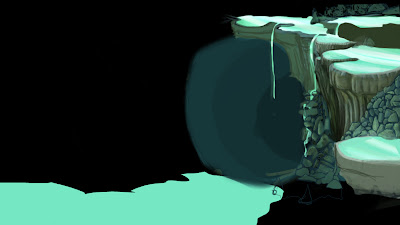Progress in Maya on my scene, finally got round to modelling some more of the rock features and scaled it up a bit more so I could use my concept art as a reference.
Friday, 30 November 2012
Wednesday, 28 November 2012
Unit 2: 3D Modelling Progress
I finally decided to begin tackling my Hero Prop, which is the Fox Spirit. So advances on my scene are being left for now while I attempt to finish this off.
And these are the current images of my lair progress.
Monday, 26 November 2012
CG Toolkit: 2D Animation Week 1
In the first week of 2D animation, we created a morphing animation in a pair. We had to start with a shape and morph it into an image, then morph that image into another image.
I was partnered with George Hind, and ours is on the right:
I was partnered with George Hind, and ours is on the right:
Friday, 23 November 2012
Unit 2: Final Concept Updates
Unit 2: 3D Modelling Progress (23/11)
Some more 3D modelling progress, currently just focusing on the main lair section but should be moving onto the right hand side of the image soon.
Thursday, 22 November 2012
Unit 2: 3D Modelling Progress
My current progress in Maya, modelling my 2D Final Concept.
I decided to start with the main focus of my scene which is the 'lair' for my Pagan Colossus and work from there.
Tuesday, 20 November 2012
CG Toolkit: 2D Animation #1/2
Lessons 1 and 2 of 2D animation was focusing on the traditional Bouncing Ball animation. MY Bouncing Ball animation is featured below:
Unit 2: Mapping Out My Lair
Before diving straight in and creating my scene in Maya, I've decided to try and visualise my original 2D concept in a more 3D way to see that sort of space I'll actually have to deal with when modelling.
I thought the best way to do this was through some rough and basic orthographic blocking out sketches and figure out the best sort of scale for all of my objects in my scene and break it down from there.
 |
| Top |
Friday, 16 November 2012
Thursday, 15 November 2012
Unit 2: Final Concept Progression (Incomplete)
Okay, so more progression for my final concept, certain things are still off or incomplete, I think some more adjustments need to be made, I'm just unsure as to what those adjustments are at this moment..
Unit 2: Final Concept Progress
My final concept progress, however, I'm still struggling with what to put on the other side, my idea has changed since the original thumbnail was done and putting rockery or more detail the other side of the negative space makes the image feel very claustrophobic.
I'm also considering adding in something to show the scale of the area better? At the moment, it seems as though its could be any size.
Tuesday, 13 November 2012
Unit 2: Hero Prop Research
After changing my idea and story a bit, I realised that my original hero prop ideas wouldn't work if I left them the same, so, I went back and looked for some more images to help give me an idea of what my hero prop could be.
Taking into consideration that the Pagan Colossus is no longer a bi-ped and has no arms, the hero prop has to be something that can slot into his structure.
I didn't scrap the idea of the Hero Prop being based upon an animal, because it could be that the forest spirit either lives inside an object such as an orb, or it has manifested itself into a creature to accompany the Pagan Colossus in his hibernation and travels.
Bibliography
Taking into consideration that the Pagan Colossus is no longer a bi-ped and has no arms, the hero prop has to be something that can slot into his structure.
I didn't scrap the idea of the Hero Prop being based upon an animal, because it could be that the forest spirit either lives inside an object such as an orb, or it has manifested itself into a creature to accompany the Pagan Colossus in his hibernation and travels.
 |
| Figure 1 |
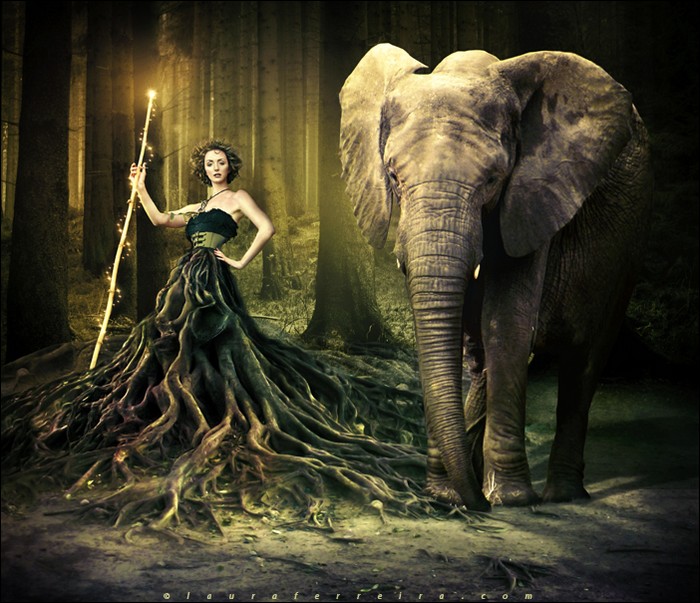 |
| Figure 2 |
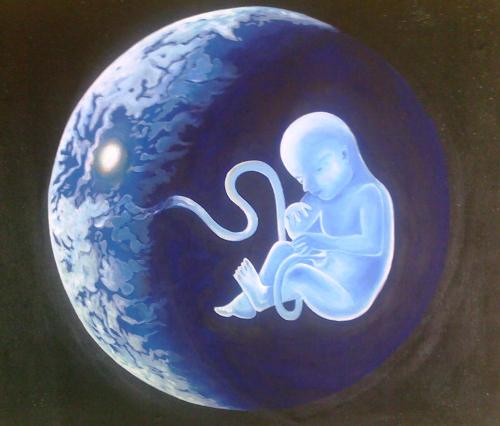 |
| Figure 3 |
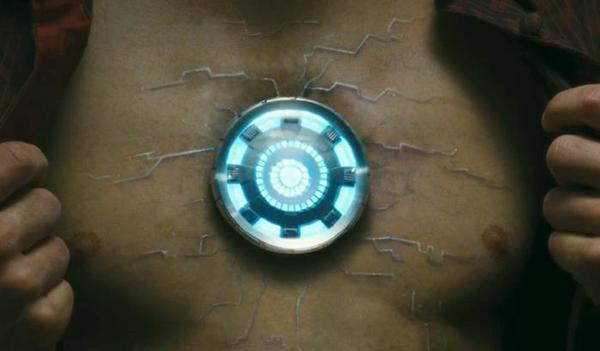 |
| Figure 4 |
 |
| Figure 5 |
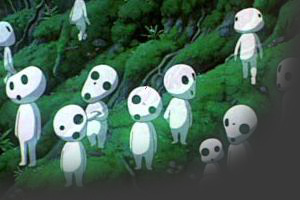 |
| Figure 6 |
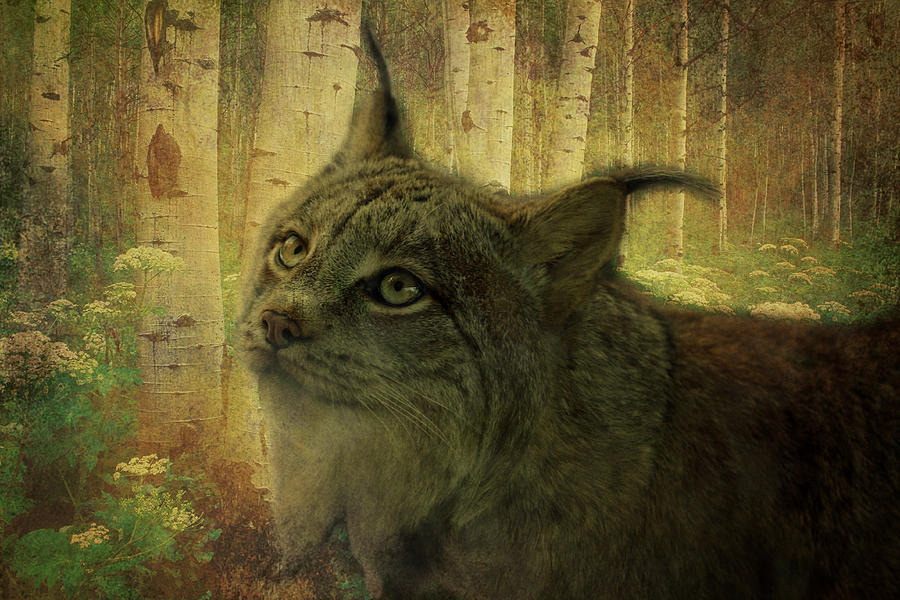 |
| Figure 7 |
 |
| Figure 8 |
 |
| Figure 9 |
Figure 1 - http://payload42.cargocollective.com/1/6/194547/3147765/figu.jpg
Figure 2 - http://funguerilla.com/images/creative-art/mothernature/mothernature12.jpg
Figure 3 - http://delhigreens.com/wp-content/uploads/2010/05/mother-nature-on-mothers-day.jpg
Figure 4 - http://25.media.tumblr.com/tumblr_m95t5kTXdx1qih67uo1_500.jpg
Figure 5 - https://blogger.googleusercontent.com/img/b/R29vZ2xl/AVvXsEhOspAujocK2gPueKAA9f8fcWpZ5i3Sr2qdwcFaW4h491kCK-iLpWJ95lvgAJu6Zek0L7hez7lSdKuMFt6qDv2347Yfaz9lEM0yF5bsxRLyc69chlSxuhj1pVyZHaasZQCeTcPX6zpYhZlV/s640/fullForestSpirit.jpg
Figure 6 - http://www.onlineghibli.com/mononoke_hime/newimages/Kodamas.jpg
Figure 7 - http://images.fineartamerica.com/images-medium-large/forest-spirit-paul-slebodnick.jpg
Figure 8 - http://fc01.deviantart.net/fs71/i/2011/307/b/4/forest_spirit_by_lisatoms-d4ey6np.jpg
Figure 9 - http://www.deviantart.com/download/185979713/forest_spirit_by_mrnat-d32q6v5.png
Figure 6 - http://www.onlineghibli.com/mononoke_hime/newimages/Kodamas.jpg
Figure 7 - http://images.fineartamerica.com/images-medium-large/forest-spirit-paul-slebodnick.jpg
Figure 8 - http://fc01.deviantart.net/fs71/i/2011/307/b/4/forest_spirit_by_lisatoms-d4ey6np.jpg
Figure 9 - http://www.deviantart.com/download/185979713/forest_spirit_by_mrnat-d32q6v5.png
Mise en Scene FIlm Review: Edward Scissorhands
Edward Scissorhands (1990) was written and directed by Tim Burton and is based on the thoughts of disfigurement and creativity with ties into Burtons fascination with Frankenstein.
One of the more noticeable aspects of Edward Scissorhands is the set design and the unique ways in which two contradicting worlds come together so well 'The apparently gloomy castle is in fact a shelter from the seemingly happy outside world, which is in fact, much darker and sinister underneath its bright colours.' (Esteryn, 2012) As Esteryn points out, the beginning of the film shows Edward in his 'birth' house which is essentially like your typical creepy house on a hill; over-grown, unloved, lack of colour and a lack of life stand out from the house. This odd house on a hill is placed at the end of a typical 60's American suburbia where everything is symmetrical and perfectly pastel. However, once the story unfolds, the audience realises that it's not the creepy house on the hill that they should be scared or afraid of, it's the 'normality' in which the Suburban housewives live in.
Edward Scissorhands came from a simple sketch and personal influences from Tim Burton were brought in to create a truly interesting and moving film, ' this personal effort, perhaps the cinema’s most enchanting parable about the misunderstood and alienated artist.' (Larsen, 2012) There are many different interpretations running through this film, but the most noticeable one is the idea of alienated artists and the ridicule for not being the stereotype of 'normal' which is uncovered in the film to represent something horrible and untrusting when something of 'unique' stature appears in their world.
'Edward connected with audiences who could relate to his loneliness and desire to be accepted into a larger community, but who was ultimately cast off because of his freakish, confrontational otherness. Burton's sketch beautifully captures the beauty and emotion of Edward's weirdness.' (Ciampaglia, 2009) Ciampaglia's quote depicts the characteristics and the personality portrayed in the sketch and the way in which Johnny Depp then portrays the character in the film.
Larsen. In: http://www.larsenonfilm.com [online] At: http://www.larsenonfilm.com/index.php?Search=Edward%20Scissorhands%20Winston&AllWords=on (Accessed on: 13/11/12)
Dante Ciampaglia. In: http://www.forbes.com [online] At: http://www.forbes.com/2009/11/24/tim-burton-drawings-moma-opinions-art-review-dante-a-ciampaglia_slide_6.html (Accessed on: 13/11/12)
One of the more noticeable aspects of Edward Scissorhands is the set design and the unique ways in which two contradicting worlds come together so well 'The apparently gloomy castle is in fact a shelter from the seemingly happy outside world, which is in fact, much darker and sinister underneath its bright colours.' (Esteryn, 2012) As Esteryn points out, the beginning of the film shows Edward in his 'birth' house which is essentially like your typical creepy house on a hill; over-grown, unloved, lack of colour and a lack of life stand out from the house. This odd house on a hill is placed at the end of a typical 60's American suburbia where everything is symmetrical and perfectly pastel. However, once the story unfolds, the audience realises that it's not the creepy house on the hill that they should be scared or afraid of, it's the 'normality' in which the Suburban housewives live in.
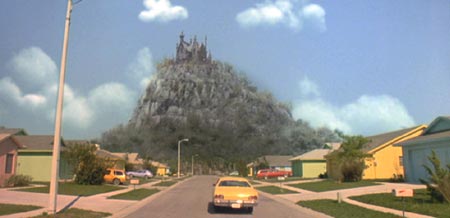 |
| Figure 1 |
Figure 1 is a hot from early on in the film and shows the design differences between the two worlds that Edward lives in. 'The movie takes place in an entirely artificial world, where a haunting Gothic castle crouches on a mountaintop high above a storybook suburb, a goofy sitcom neighbourhood where all of the houses are shades of pastels and all of the inhabitants seem to be emotional clones of the Jetsons' (Ebert, 2003) Roger Ebert points out that the suburban neighbourhood is viewed upon as a goofy sitcom and very unrealistic, which ties in with Burtons visual style throughout the film, each aspect of Edward Scissorhands is somewhat an exaggerated truth of the real world but not unbelievably so.
Edwards house, the haunting Gothic castle, used its size to help create the feeling that Edward was monstrous and an abnormality from the pastel life of the suburb. The sizing of the castle in relation to Edward made him almost look like a small creature lost in the huge space of the house that was warning people off with its structure and appearance.
Figure 2 shows one of the characters inside the castle, it demonstrates the way in which the set almost engulfs the character by its size and makes them seem small and exposed in the empty spaces.
 |
| Figure 2 |
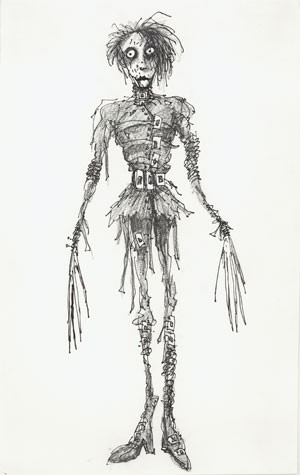 |
| Figure 3 |
Bibliography
Images
Figure 1 - http://www.alicia-logic.com/capsimages01/esc_014Neighborhood.jpg
Figure 2 - http://ia.media-imdb.com/images/M/MV5BMTUxMjA1NDgyM15BMl5BanBnXkFtZTYwNjA0NzY3._V1._SX475_SY311_.jpg
Figure 3 - http://25.media.tumblr.com/tumblr_ktacx0WLaX1qa214go1_400.jpg
Quotes
Alias Esteryn. In: http://coco.raceme.org [online] At: http://coco.raceme.org/films/edwardscissorhands/review.php (Accessed on: 13/11/12)
Alias Esteryn. In: http://coco.raceme.org [online] At: http://coco.raceme.org/films/edwardscissorhands/review.php (Accessed on: 13/11/12)
Roger Ebert. In: http://rogerebert.suntimes.com [online] At: http://rogerebert.suntimes.com/apps/pbcs.dll/article?AID=/19901214/REVIEWS/12140301 (Accessed on: 13/11/12)
Larsen. In: http://www.larsenonfilm.com [online] At: http://www.larsenonfilm.com/index.php?Search=Edward%20Scissorhands%20Winston&AllWords=on (Accessed on: 13/11/12)
Dante Ciampaglia. In: http://www.forbes.com [online] At: http://www.forbes.com/2009/11/24/tim-burton-drawings-moma-opinions-art-review-dante-a-ciampaglia_slide_6.html (Accessed on: 13/11/12)
Unit 2: Thumbnails 28 - 29
I've been trying to think about my final concept in terms of angles and what to place into the scene, the first image is one I've been working on, however, I felt as though it didn't quite capture the enormity of my Pagan Colossus. So, keeping with a similar scene, I decided to try a new angle that better suits my character and helps to portray the area in a larger scale.
Monday, 12 November 2012
Mise en Scene Film Review: La Belle et la Bete
La Belle et la Bete, or more commonly known as Beauty and the Beast (1946), was filmed and directed by a French poet called Jean Cocteau, whose designer influences and diverse background can be seen throughout the film.
Throughout the film, there is the use of humans in place of real world artifacts, such as lamps, statues and candle holders. This gives the film both an eerie sense of people watching you, but also a very whimsical and theatrical feel that the artifacts are there to help you and serve you.
Figure 1 is a film still from the beginning of the film, featured in the image is the use of arms and hands as candle holders that move in time with the people in the set, which also gives the film a real-time feel to it. 'Cocteau's version is lushly, deliciously frightful, embellishing the basic fairy tale with a surreal, delicate eroticism of spying mirrors; of a magic castle with seeming peeping-tom eyes, all the better to satisfy ones every whim' (Johanson, 2002) As Maryann Johanson says, the film that Cocteua's created was not an ordinary fantasy romantic film that is portrayed in the Disney adaptation, but more of a dark and frightful version that is somewhat more believable to an adult audience; with the use of people as props, it lends the film a sense of eerie realism that draws in the viewers attention to the sets.
Another noticeable aspect of the film is the theatrical lighting that is used to emphasise the mood of a scene or help to enlarge or shrink some of the set to create more interesting spaces. A lot of the lighting throughout the film is based solely on the characters faces when they are thinking or talking, this is mostly to help the audience follow who is the main person in that scene and what the main focus is, if a scene has more to it then the lighting will change and expand to show more of the surroundings.
Figure 2 is a shot of Beauty looking into the magic mirror to see how her Father is. The lighting in this scene is focuses solely on Beauty and the mirror to show the main focus and point of this particular scene and to give all the attention to them rather than the background and the set.
'Beast's world is dreamily romantic, everything curve shaped and shadowy, the expressionist lighting just exquisite' (Lorefice, 2005) As Lorefice says, the lighting in the Beast's castle and world is done in a way to create a dream like ambiance to tie in with the story of the film and to create a much more thrilling effect on the audience when the characters first enter the castle.
Considering the date in which La Belle et la Bete came out, there is a lot of trick photography and effects that are used to help simulate a dream like world in the Beasts castle; Beauty seeming to glide through doors and skimming across floors, the necklace of pearls that turns into something horrible when the other sister touches it and the movements of objects within the castle that all have an airy and floaty feel about them all add to the effect of the castle and the way the audience interprets it. 'Even the film's simple (non-digital) camera tricks can still shock, as when Belle attempts to give a beautiful pearl necklace to her sister and it turns into a hunk of rotted vine.' (Anderson, 2011) Anderson mentions the necklace and the effect that the camera tricks still have on the audience, simplistic camera tricks can help create a surreal environment, which was done with Beasts castle.
Bibliography
Figure 1 - http://fnac.toutlecine.com/images/film/0014/00141326.html
Figure 2 - http://www.rangerpulse.com/?p=975
Figure 3 - http://dudummesau.com/2011/09/11/klaus-kinski-call-me-beast/
Quotes
Maryann Johanson. In: http://www.flickfilosopher.com/ [online] At: http://www.flickfilosopher.com/blog/2002/08/beauty_and_the_beast_la_belle.html (Accessed on: 12/11/12)
Mike Lorefice. In: http://www.rbmoviereviews.com/ [online] At: http://www.rbmoviereviews.com/movies/best1946.html#bete (Accessed on: 12/11/12)
Jeffery Anderson. In: http://www.combustiblecelluloid.com [online] At: http://www.combustiblecelluloid.com/classic/bellebete.shtml (Accessed on: 12/11/12)
Throughout the film, there is the use of humans in place of real world artifacts, such as lamps, statues and candle holders. This gives the film both an eerie sense of people watching you, but also a very whimsical and theatrical feel that the artifacts are there to help you and serve you.
 |
| Figure 1 |
Another noticeable aspect of the film is the theatrical lighting that is used to emphasise the mood of a scene or help to enlarge or shrink some of the set to create more interesting spaces. A lot of the lighting throughout the film is based solely on the characters faces when they are thinking or talking, this is mostly to help the audience follow who is the main person in that scene and what the main focus is, if a scene has more to it then the lighting will change and expand to show more of the surroundings.
 |
| Figure 2 |
Considering the date in which La Belle et la Bete came out, there is a lot of trick photography and effects that are used to help simulate a dream like world in the Beasts castle; Beauty seeming to glide through doors and skimming across floors, the necklace of pearls that turns into something horrible when the other sister touches it and the movements of objects within the castle that all have an airy and floaty feel about them all add to the effect of the castle and the way the audience interprets it. 'Even the film's simple (non-digital) camera tricks can still shock, as when Belle attempts to give a beautiful pearl necklace to her sister and it turns into a hunk of rotted vine.' (Anderson, 2011) Anderson mentions the necklace and the effect that the camera tricks still have on the audience, simplistic camera tricks can help create a surreal environment, which was done with Beasts castle.
 |
| Figure 3 |
Bibliography
Figure 1 - http://fnac.toutlecine.com/images/film/0014/00141326.html
Figure 2 - http://www.rangerpulse.com/?p=975
Figure 3 - http://dudummesau.com/2011/09/11/klaus-kinski-call-me-beast/
Quotes
Maryann Johanson. In: http://www.flickfilosopher.com/ [online] At: http://www.flickfilosopher.com/blog/2002/08/beauty_and_the_beast_la_belle.html (Accessed on: 12/11/12)
Mike Lorefice. In: http://www.rbmoviereviews.com/ [online] At: http://www.rbmoviereviews.com/movies/best1946.html#bete (Accessed on: 12/11/12)
Jeffery Anderson. In: http://www.combustiblecelluloid.com [online] At: http://www.combustiblecelluloid.com/classic/bellebete.shtml (Accessed on: 12/11/12)
Sunday, 11 November 2012
Unit 2: Thumbnails 26 - 27
After experimenting with the ice cave idea yesterday, I decided to try and incorporate different environments together to see what sort of space I could come up with.
Saturday, 10 November 2012
Unit 2: Thumbnails 23 - 25
First thumbnail attempting to incorporate the different aspects of my lair, perspective and environment need working on, but this was more of a practice for the negative space.
Unit 2: Thumbnails 15 - 22
Attempting to use some of the creatures I researched as inspiration for the negative space the Pagan Colossus could create in an environment, or the shape left behind when he's not there.
The ones that appealed to me more are highlighted; these ones seemed more interesting and gave me the impression more could be done with them.
Unit 2: Negative Spaces 2
Playing around with shapes in plasticine again, figuring out different angles and different lighting.
Subscribe to:
Posts (Atom)


























